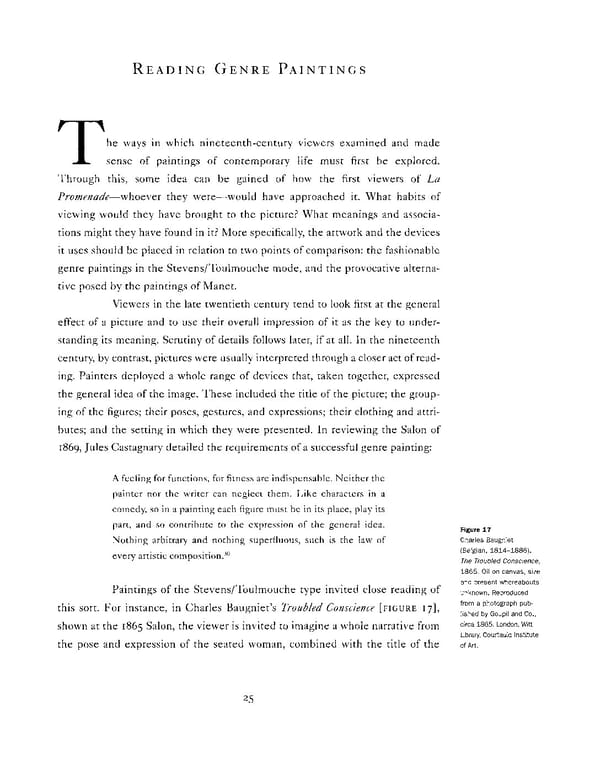READING GENRE PAINTINGS The ways in which nineteenth-century viewers examined and made sense of paintings of contemporary life must first be explored. Through this, some idea can be gained of how the first viewers of La Promenade—whoever they were—would have approached it. What habits of viewing would they have brought to the picture? What meanings and associa- tions might they have found in it? More specifically, the artwork and the devices it uses should be placed in relation to two points of comparison: the fashionable genre paintings in the Stevens/Toulmouche mode, and the provocative alterna- tive posed by the paintings of Manet. Viewers in the late twentieth century tend to look first at the general effect of a picture and to use their overall impression of it as the key to under- standing its meaning. Scrutiny of details follows later, if at all. In the nineteenth century, by contrast, pictures were usually interpreted through a closer act of read- ing. Painters deployed a whole range of devices that, taken together, expressed the general idea of the image. These included the title of the picture; the group- ing of the figures; their poses, gestures, and expressions; their clothing and attri- butes; and the setting in which they were presented. In reviewing the Salon of 1869, Jules Castagnary detailed the requirements of a successful genre painting: A feeling for functions, for fitness are indispensable. Neither the painter nor the writer can neglect them. Like characters in a comedy, so in a painting each figure must be in its place, play its part, and so contribute to the expression of the general idea. Figure 17 Nothing arbitrary and nothing superfluous, such is the law of Charles Baugniet every artistic composition.30 (Belgian, 1814-1886). The Troubled Conscience, 1865. Oil on canvas, size Paintings of the Stevens/Toulmouche type invited close reading of and present whereabouts unknown. Reproduced this sort. For instance, in Charles Baugniet's Troubled Conscience [FIGURE 17], from a photograph pub- lished by Goupil and Co., shown at the 1865 Salon, the viewer is invited to imagine a whole narrative from circa 1865. London, Witt Library, Courtauld Institute the pose and expression of the seated woman, combined with the title of the of Art. 25
 Pierre-Auguste Renoir: La Promenade Page 32 Page 34
Pierre-Auguste Renoir: La Promenade Page 32 Page 34